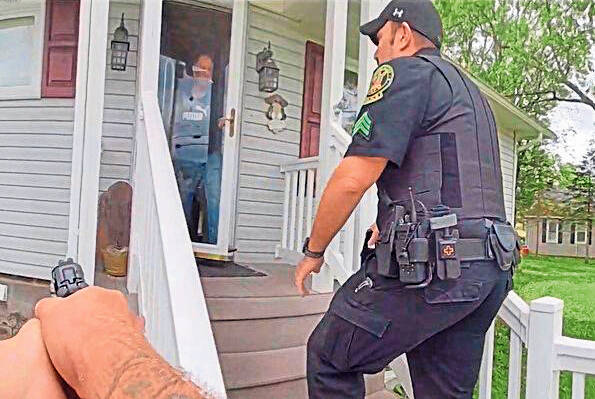Editorial: Why should the DA have to approve body camera video release?
The things we can see make a huge difference in the things we can understand.
We show pictures not only because they add interest to a story but also because they can give as much information as the words. In addition, they can provide context. Pictures can help us not just take in the data but also map it.
If a still image can do that by showing us objects in a particular space, a moving image can do the same with time. We can appreciate not just what unfolded but also how quickly. Accompanying sound can give urgency or emotion. Together, the visual and audio can turn what is static and flat into something that is fully rounded and more easily interpreted.
Among the most important images are those taken in real time, over the course of events that began as normal days that became extraordinary. The doorbell videos that show the moment when Rustic Ridge exploded are a good example.
So is police body camera footage. Videos have illustrated unfolding incidents and split-second decisions by officers in the line of duty. They have shown people things they needed to see, like the violent beating of a Memphis man by a street crime unit, an assault by an Ohio police dog in July or the rescue of a man who fell onto subway tracks.
But Pennsylvania law regarding the footage isn’t exactly user-friendly. Shocking, we know. While once included in Right to Know Law, that changed in 2017. It now falls under the more complicated Act 22 wiretap provisions.
“In practice, there is very little public access provided under Act 22, a significant problem for Pennsylvanians seeking to understand law enforcement activity in the communities they serve,” Pennsylvania NewsMedia Association law counsel Melissa Melewsky said.
Now Westmoreland County District Attorney Nicole Ziccarelli wants local police departments to let her office review footage before it is released.
That didn’t happen in August when Ligonier Township released video of events leading to the July death of Robbie Thomas Saunders, 59. Two officers responded to a domestic incident at Saunders’ home. The video showed officers approaching the front door and Saunders emerging with an upraised machete. One officer fired a stun gun, the other a handgun.
That video seemed to support Ziccarelli’s decision weeks earlier that the shooting was justified, making it a perfect example of why transparency can be not just a check on law enforcement but also a benefit.
What is more troubling is an attempt by Ziccarelli’s office to exert control over the independent law enforcement agencies of the county. The DA is the county’s prosecutor and should be partner to those agencies, not overlord.
The state should head off this kind of power struggle by better defining the process for release and prioritizing transparency and the public’s right to see and understand what is being done in its name.
Remove the ads from your TribLIVE reading experience but still support the journalists who create the content with TribLIVE Ad-Free.

